The Rise and Fall of Communist Utopias: An Insightful Explorer’s Chronicle
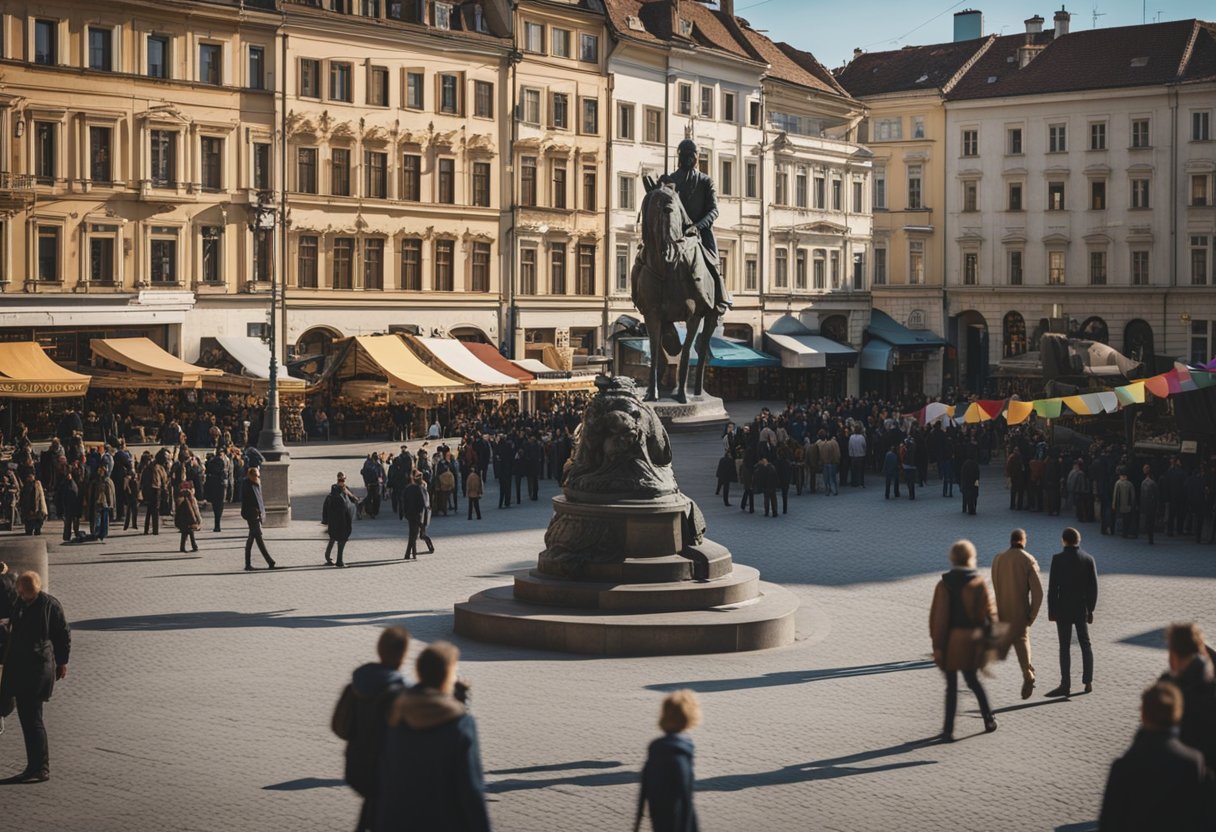
Updated On: March 27, 2024 by Aya Radwan
Communism, as a political ideology, has significantly impacted the global stage, shaping nations, societies, and the lives of countless individuals. The construction of communist utopias, grounded in the promise of equality and a classless society, has captured the imagination and left an indelible mark on the cultural and physical landscapes across various continents. As we explore the rise and fall of these utopian visions, we take you on a journey through time and space to visit some of the most emblematic sites and landmarks that once epitomised the communist ideal.
Our travel guide traverses the remnants of communist utopias, from the historically rich Soviet bloc countries to the lesser-known enclaves of communism outside of Europe. We’ll delve into the complex web of political, economic, and social factors that contributed to the creation and eventual decline of communist governments. In doing so, we uncover the legacies of significant figures whose ideologies and actions have left a profound legacy on contemporary society. Join us as we navigate the fascinating ruins and surviving triumphs of the communist era, offering a nuanced perspective beyond the oversimplified narrative of failure or triumph.
Historical Context of Communist Utopias
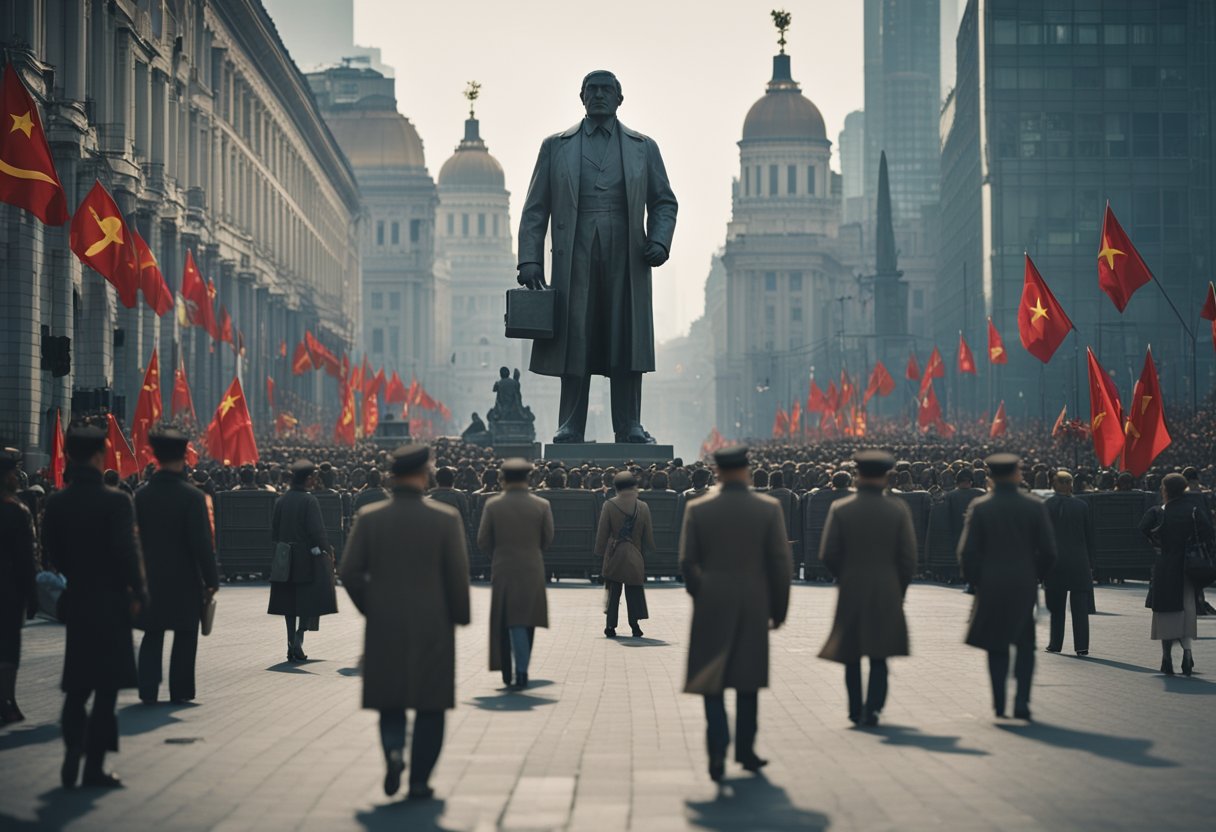
Communist utopias have long captivated the imagination, tracing their philosophical and political roots back to the 19th century. They proposed a radical restructuring of society and have left a complex legacy.
Inception of Marxism
The seeds of communist utopia were sown by Karl Marx, a German philosopher, economist, and revolutionary socialist. Marx‘s seminal work, penned with Friedrich Engels, ‘The Communist Manifesto’, laid the basis for communism as an ideology. It argued for a classless society where the proletariat overthrew the bourgeois through revolution. His critiques of capitalism are detailed in Das Kapital, which discusses the struggles between the working class and capitalists.
Evolution of Communist Ideology
Marx‘s ideas evolved as intellectuals and activists interpreted his works, often adapting them to national and local contexts. Notably, in Russia, Vladimir Lenin became a pivotal figure in adapting Marx‘s ideas, which led to the formation of the Russian social-democratic movement. Marxism gave way to Leninism, a pragmatic take on Marx‘s theories tailored to the unique socio-political landscape of early 20th-century Russia. This adaptation was essential for the success of the Russian Revolution in 1917, which set a precedent for other revolutionary movements around the globe.
Global Impact of the Russian Revolution
The 1917 Russian Revolution marked the first successful establishment of a communist state, giving rise to the Soviet Union, which became a model for future communist states. This event had a profound and wide-reaching impact, inspiring communist movements worldwide and reshaping global politics through much of the 20th century. The Soviet Union’s existence also contributed to the Cold War’s dynamics, as ideological battles between capitalist and communist blocs defined international relations for decades.
Communist Utopias in Europe
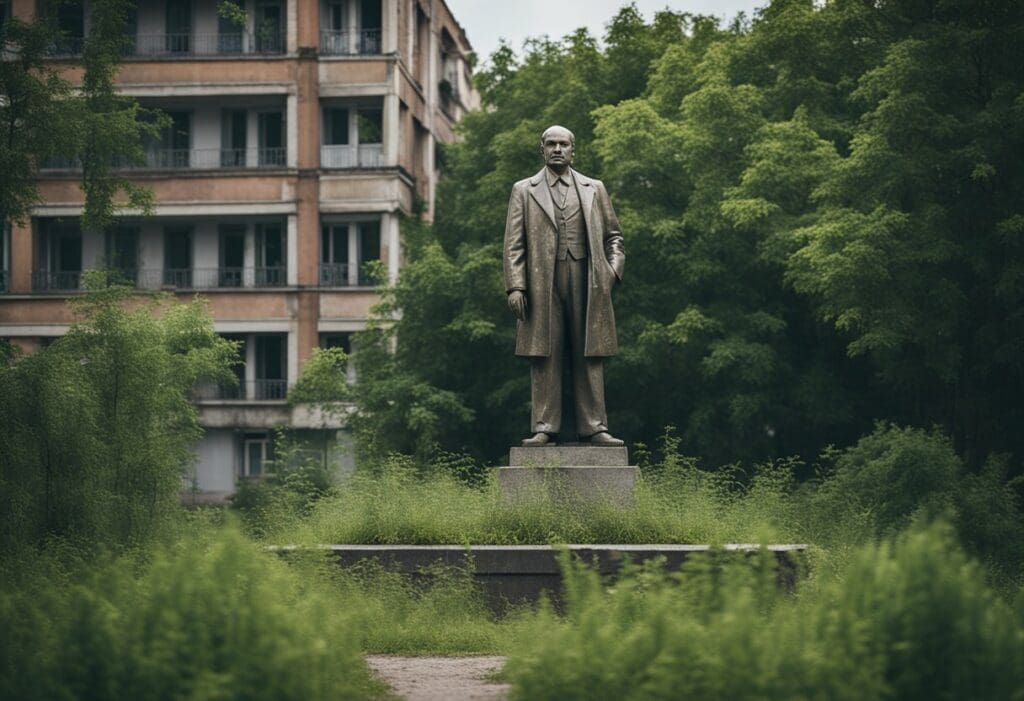
Exploring the history of Communist ideals in Europe takes us through a turbulent era of grand visions and geopolitical divisions. We witness the dramatic transformations in the landscape of Eastern Europe, delineated by the Iron Curtain, and the enduring legacies that shape the continent today.
Rise of Communism in Eastern Europe
Communism’s grip on Eastern Europe began post-World War II, as the Soviet Union influenced a wave of socialist governments across the region. Nations such as Czechoslovakia, Hungary, and Yugoslavia embraced Communist doctrine, seeking to create societies based on the state ownership of the means of production and the absence of social classes. The European Union, in its embryonic form, watched cautiously, albeit impotent, to change the tide of Soviet influence.
The Iron Curtain and Its Effects
The term Iron Curtain came to symbolise the profound division of Europe. It represented a physical barrier between East and West Germany and ideological and political boundaries separating Western democracies and Eastern Communist states. The ramifications of the Iron Curtain reverberated throughout the continent, leading to isolated nations and a divided European consciousness that lasted until the twilight years of the 20th century.
Landmarks and Tourism in the Communist States
In the pursuit of exploring the shadowy yet intriguing legacy of communist utopias, one may find a wealth of landmarks and tourist opportunities. These sites encapsulate the ambition and the stark realities of an era where ideology shaped the urban landscape.
Preserved Sites and Museums
Many former communist states have preserved sites and localities as poignant reminders of the past. Bucharest, the capital of Romania, presents an array of such locations. An illustrative example is the former residence of Nicolae Ceaușescu, now a museum reflecting the opulent lifestyle of Romania’s last communist leader, contrasting starkly with the austerity experienced by the populace during his regime. Visitors to the site gain insight into the personal lives of the Ceaușescu family and the disconnect between the ruling elite and the general public.
The Museum of Communism offers a deeper understanding of the era, providing historical context and exhibiting artefacts that reflect daily life and the overarching state control characteristic of the time. Such museums play a crucial role in educating on communism’s complexities and the human stories within its ideological confines.
Architectural Heritage and Tours
Communist architecture, often monumental and austere, remains a significant part of the landscape in these states. The Palace of the Parliament in Bucharest stands as one of the largest administrative buildings in the world, embodying the grandeur communist leaders sought to project. Its colossal scale and luxurious details are accessible through guided tours, revealing a stark symbol of communist might and extravagance.
In city squares such as Revolution Square, one may tread upon the ground where pivotal historical moments unfolded, leading to the fall of communist regimes. These areas are frequently featured in architectural heritage tours, where the narratives and significance behind the buildings are detailed, providing a palpable connection to the history that shaped them.
By visiting these landmarks and participating in structured tours, one can not only witness the remnants of communist aspirations but also sense the undercurrents that led to their dissolution.
Significant Figures and Their Legacies
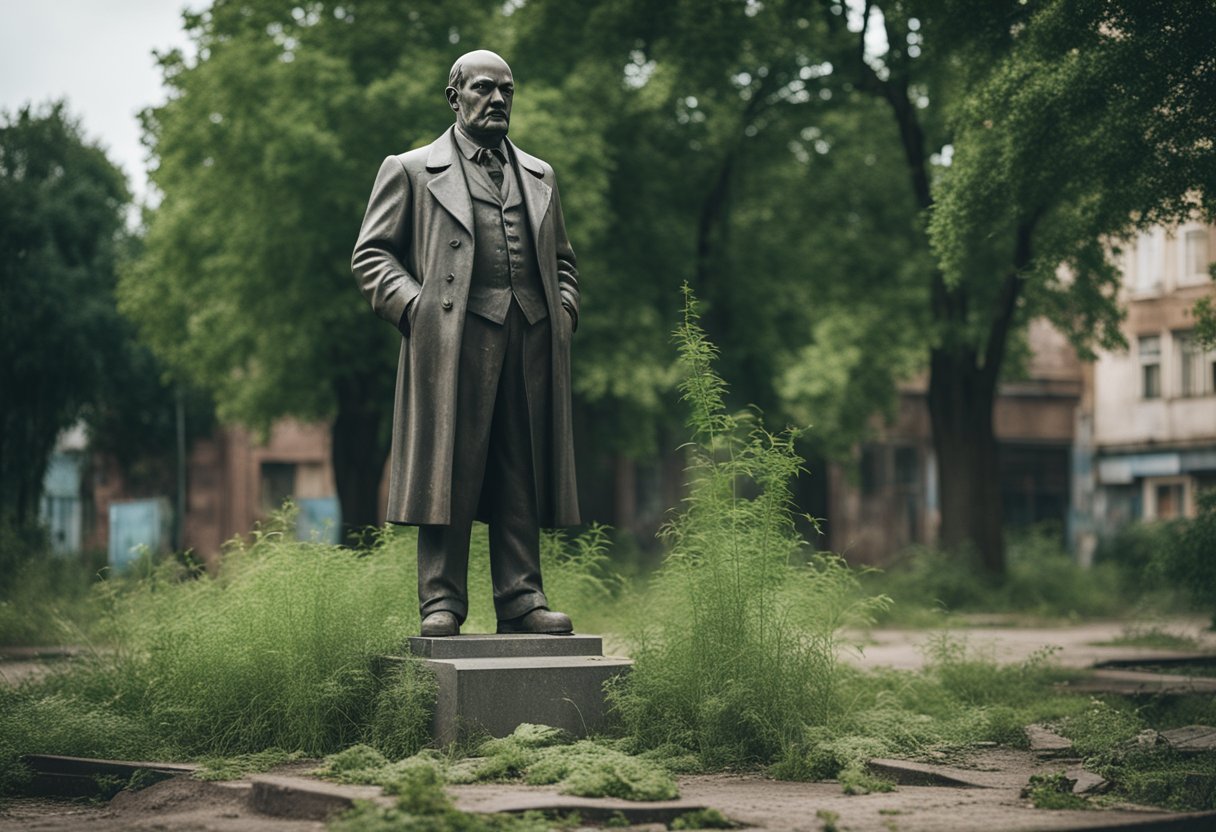
In the vast panorama of communist history, certain figures stand out for their indelible impact on their nations and the ideologies they espoused. We explore two such leaders and the distinct legacies they left behind.
Joseph Stalin and Stalinism
Joseph Stalin, the General Secretary of the Communist Party of the Soviet Union, was a pivotal figure whose rule from the mid-1920s until his death in 1953 drastically shaped the Soviet state. Under his leadership, influential policies and a political system known as Stalinism were established. Stalin‘s legacy is marked by the extensive industrialisation of the Soviet Union but also by the Great Purge, where a significant number of people were executed or imprisoned.
One cannot discuss Stalin without mentioning the establishment of Magnitogorsk. This symbolic city became synonymous with the Soviet steel industry and represented the zenith of Stalin’s industrial and social policies. This city was part of Stalin’s vision to transform the Soviet Union into a formidable industrial power.
Nicolae Ceaușescu and Romanian Communism
Nicolae Ceaușescu’s rule over Romania is another significant chapter in the narrative of communism. Ascending to power in 1965, Ceaușescu created one of the most repressive regimes in Eastern Europe. His form of governance was characterised by an intense cult of personality, severe restrictions on political liberties and a relentless suppression of dissent.
Ceaușescu’s Romania saw several developmental projects, but his later years were dominated by policies that led to economic turmoil and widespread poverty. The Romanian leader’s brutal regime eventually culminated in the Romanian Revolution of 1989, which led him to be summarily tried and executed. Târgoviște, a principal site in the revolution, is entwined with the closing days of Ceaușescu‘s rule, where he and his wife Elena faced their ultimate fate.
Economic Policies and Their Impact
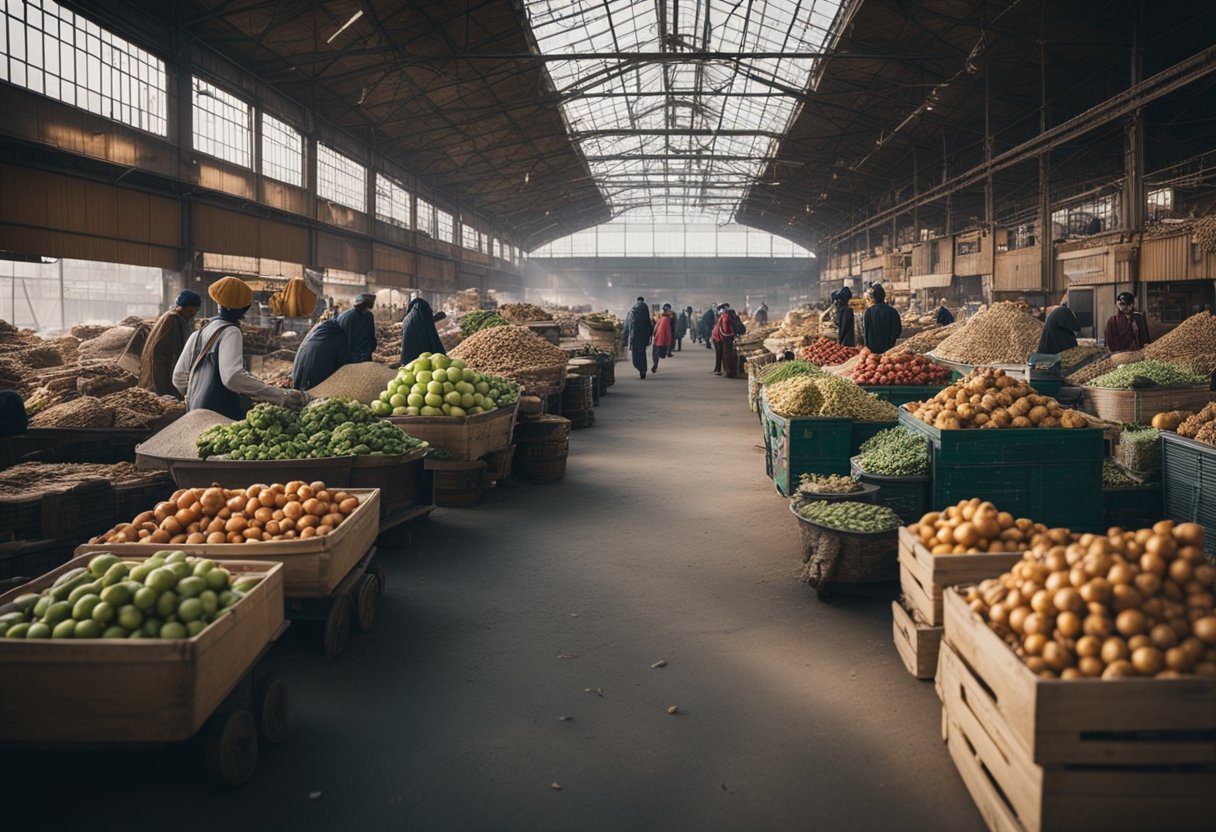
In this exploration, we will delve into how economic policies during communist rule shaped the allocation of resources and spurred changes in agricultural and industrial sectors.
State Control of Resources
Communism is characterised by the state’s firm control over resources, including private property. This transition to state ownership aimed at redistributing wealth across the populace, effectively abolishing the concept of personal wealth in favour of communal ownership. Within several communist states, the nationalisation of assets often led to a centralised economy where the government had the authority to determine the production and distribution of goods.
Agricultural and Industrial Development
Communism dramatically altered the landscape of agricultural and industrial development. The drive towards rapid industrialisation was a priority, as seen in the push for increased steel and coal production, often equated with economic strength. Contrasts were stark in the agricultural sector, where collectivisation policies hoped to increase efficiency but often resulted in reduced incentives, leading to significant issues such as food shortages.
The drive for industrial growth at all costs even played a role in exacerbating tensions leading to war, as seen in the fall of some communist states, where the neglect of consumer goods led to dissatisfaction and economic decline.
Cultural and Social Aspects
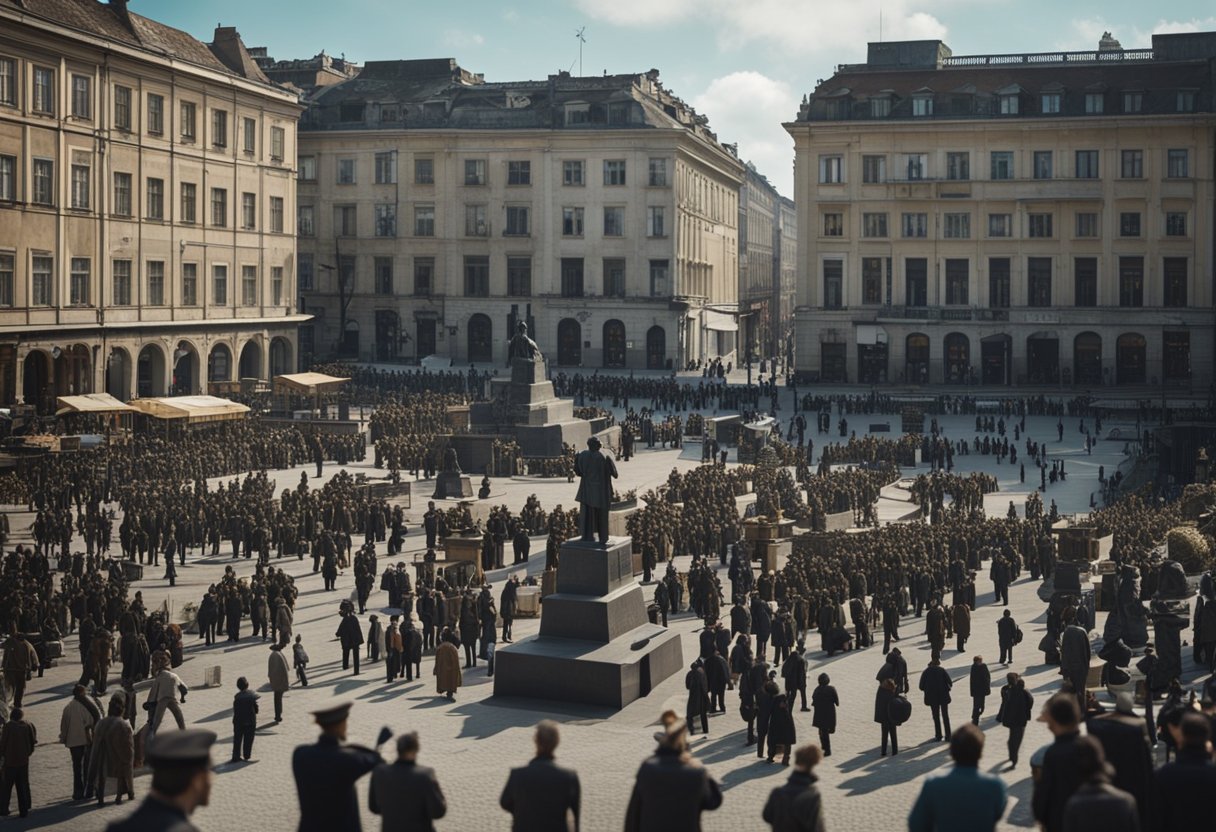
As we explore the cultural and social aspects of Communist utopias, it’s essential to consider the role of propaganda in shaping Communist culture and the day-to-day life under these regimes. The promises of a Marxist utopia greatly influenced both to create a classless society.
Propaganda and Communist Culture
Propaganda served as the cornerstone of Communist culture, omnipresent in every facet of life. The Communist Party utilised a range of mediums, such as posters, films, literature, and education, to disseminate its message. Art and media were not simply for entertainment but tools designed to ingrain the Marxist ideology. The narrative often depicted an idealised vision of society, with workers as the vanguard leading towards a utopian future sans class divides. However, the gap between the portrayal and the lived reality frequently led to disillusionment among the populace.
Life Under Communist Regimes
Life in a Communist regime was structured around the collective above the individual. The state managed all economic and social life aspects, aiming to align personal aspirations with the collective good. Citizens experienced a mix of security and surveillance, with guaranteed employment, healthcare, and education on one side and strict control and limited freedom of expression on the other. Despite the vision of a utopia, shortages, queues for basic goods, and privileges for party elites were commonplace. This stark contrast revealed the challenges faced in pursuing a true Marxist utopia.
Fall of Communist Governments
As we explore the Fall of Communist Governments, we’ll be witnessing pivotal moments of revolution and resistance that reshaped nations, and the Romanian Revolution stands as a particularly stark example of the sudden and violent end of a communist regime.
Revolution and Resistance
A sweeping wave of revolution and resistance marked the collapse of communist governments across Eastern Europe. Citizens, long oppressed by authoritarian rule, began to demand change and more freedoms. The unrest and protests were often sparked by economic stagnation, the desire for political reform, and the influence of reforms in other parts of the Soviet bloc. Ultimately, these movements led to mass demonstrations, political upheaval, and, in many instances, the overthrow of communist governments.
The Romanian Revolution and Its Aftermath
In Romania, the 1989 revolution was particularly violent. It was characterised by its swift escalation from peaceful protests to a brutal crackdown by the government. The Romanian Revolution reached its climax with the capture and execution by firing squad of Nicolae Ceaușescu, the country’s long-time dictatorial leader, and his wife, Elena. Following their televised executions, Romania underwent significant political and social change, transitioning to democracy and a market-based economy.
Communism Outside Europe
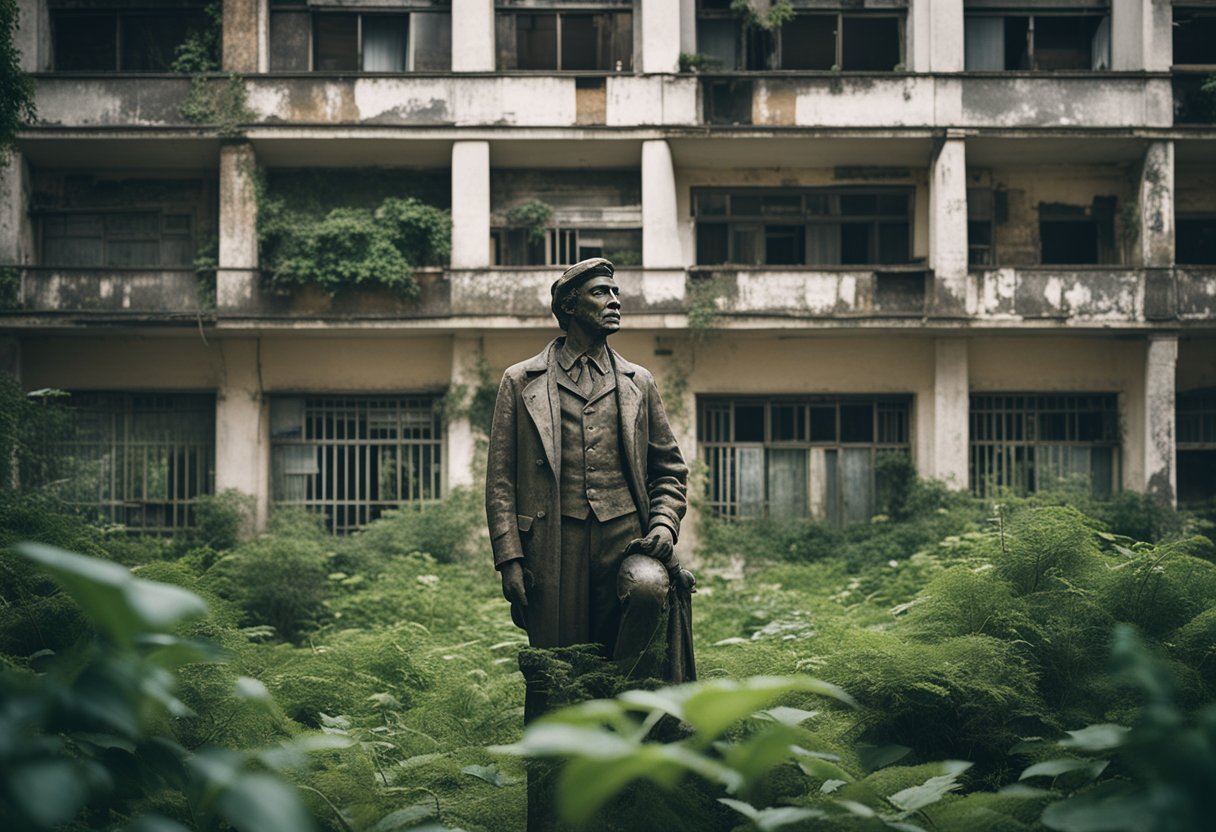
Communism’s global reach extended far beyond the confines of Europe, having significant impacts in Asia and Africa, where diverse approaches to communist ideology resulted in various outcomes, from lasting governments to influential movements.
Asia’s Path to Communism
Communism in Asia has shown significant endurance, particularly in countries like China and North Korea. Under Mao Zedong‘s leadership, China transformed into a communist state in 1949, using strategies adapted to its own vast rural context. The Chinese Communist Party remains in power today, emphasising economic growth and stability while maintaining a one-party system. On the other hand, North Korea – officially known as the Democratic People’s Republic of Korea – adopted a distinctive form of communism under the rule of the Kim dynasty, characterised by intense isolation and a centralised family-led power structure.
Communist Movements in Africa
In Africa, communist movements emerged largely as a response to colonialism and post-colonial power vacuums. Various countries on the continent saw the rise of parties and movements inspired by communist ideology. While most African nations did not adopt communism as a state system, the influence of the ideology was felt in liberation movements and governmental policies across the continent. However, the legacy of communism in Africa is more complex, with few lasting successes compared to the endurance observed in Asia.
Legacy and Perception Today
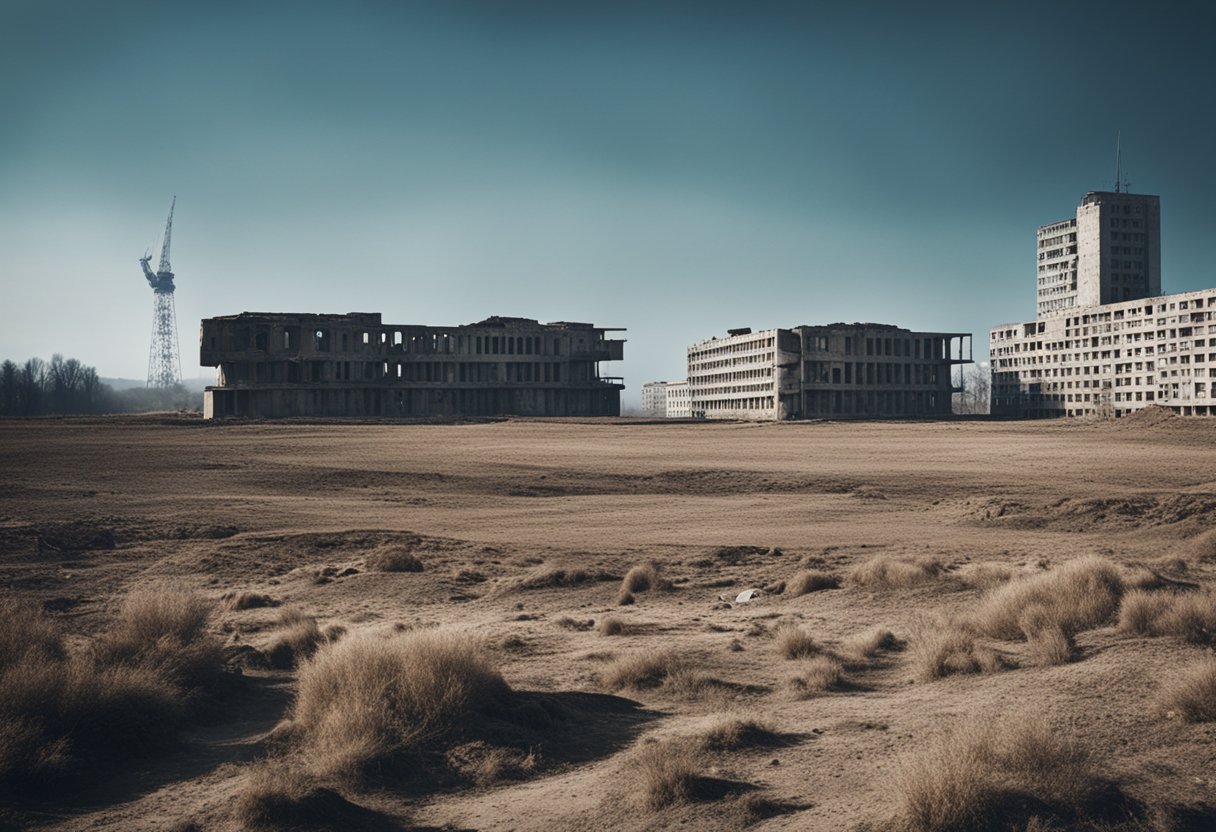
In examining the legacy and perception of communist utopias today, particularly the Soviet Union and Romania, we find a complex tapestry of historical impact and contemporary relevance.
Post-Communism in the Global Context
After the decline of the Soviet Union, the world saw a significant shift in political dynamics. The disintegration of the USSR in the early 1990s marked the end of a bipolar world order, giving rise to new geopolitical challenges. Countries that once formed part of the Soviet bloc, including Romania, embraced market economies and multiparty democracies, albeit with varied outcomes. Romania, for instance, faced a rocky transition but has sought to integrate more closely with Western Europe, joining NATO and the EU.
Ongoing Influence on Modern Government and Society
The impact of communist utopias goes beyond historical context, influencing modern governance and societal ideals. While former communist states have adopted new governance structures, the legacy persists in the societal fabric and institutions. The quest for equality and a classless society, once hallmark objectives of communist utopias, continue to inform public discussions and policy initiatives.
We can observe this in ongoing debates about wealth distribution and social welfare systems. Moreover, countries like Romania carry the vestiges of their past, which can be seen in the persistence of strong state presence in certain economic sectors and the enduring appeal of social security measures.
Frequently Asked Questions
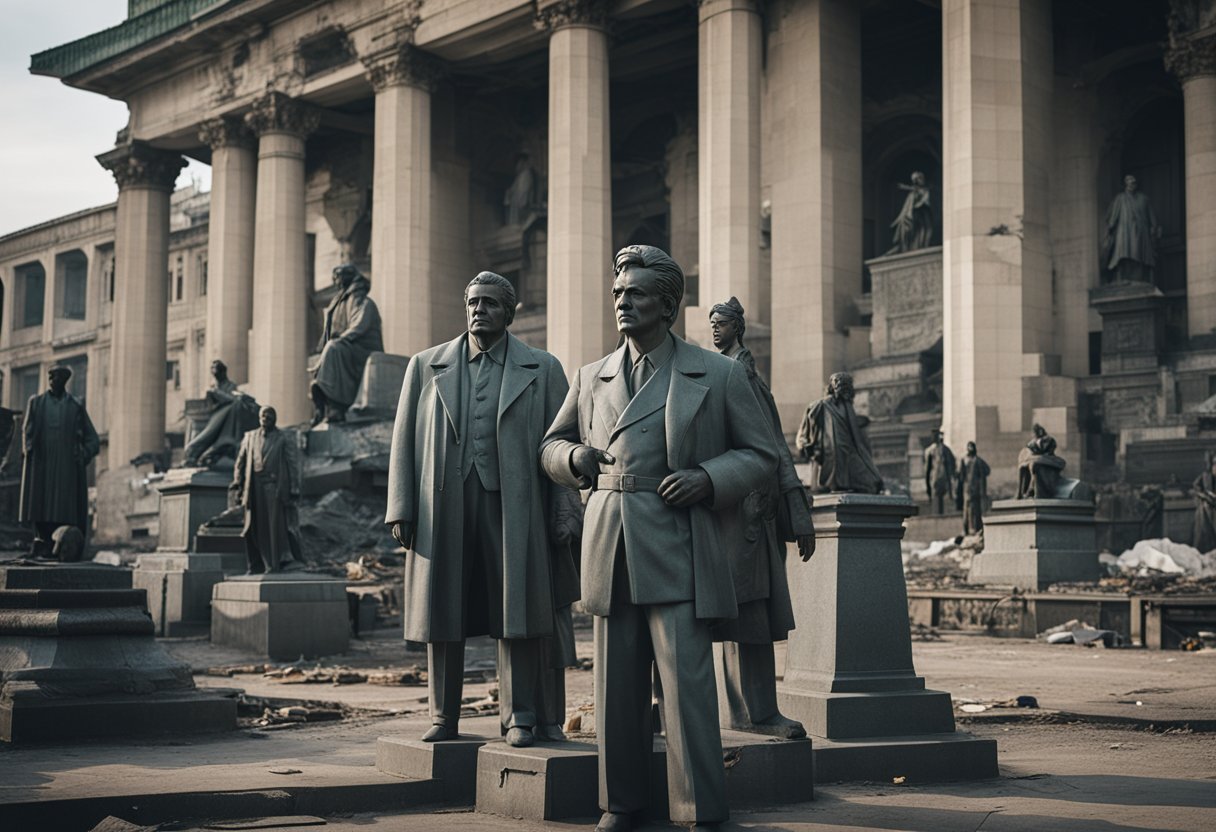
In exploring the rise and fall of communist utopias, we’ve encountered several recurring questions. We address some of the most pressing queries related to these social experiments to aid our understanding.
What factors led to the downfall of utopian communities?
Utopian communities often crumbled due to internal strife, economic insufficiencies, and external pressures. For instance, the inherent difficulties in achieving total equality and sustaining high levels of communal motivation significantly affected their decline.
In what ways did utopian movements shape modern society?
Utopian movements have profoundly influenced contemporary social welfare policies and communal living ideals. They’ve spurred progressive thought in workers’ rights, gender equality, and environmental sustainability.
What were the primary motivations behind establishing utopian experiments in the 1800s?
In the 1800s, utopian experiments were mainly inspired by desires to rectify social injustices, create moral societies, and escape the often brutal realities of industrial capitalism.
What common characteristics can be found among historical utopian communities?
Historically, utopian communities typically shared values such as communal ownership, egalitarianism, self-sufficiency, and a strong work ethic aimed at the betterment of the collective over the individual.
How did Marxist theory influence early utopian experiments?
Marxist theory profoundly impacted early utopian experiments, providing a philosophical foundation for communal living that opposed capitalist structures, positing a society where production and wealth were shared equitably.
To what extent did utopian communities succeed in achieving their ideals?
Utopian communities experienced varying degrees of success, with some creating sustainable lifestyles for their members for years, while others faltered shortly after their inception due to practical and ideological challenges.






